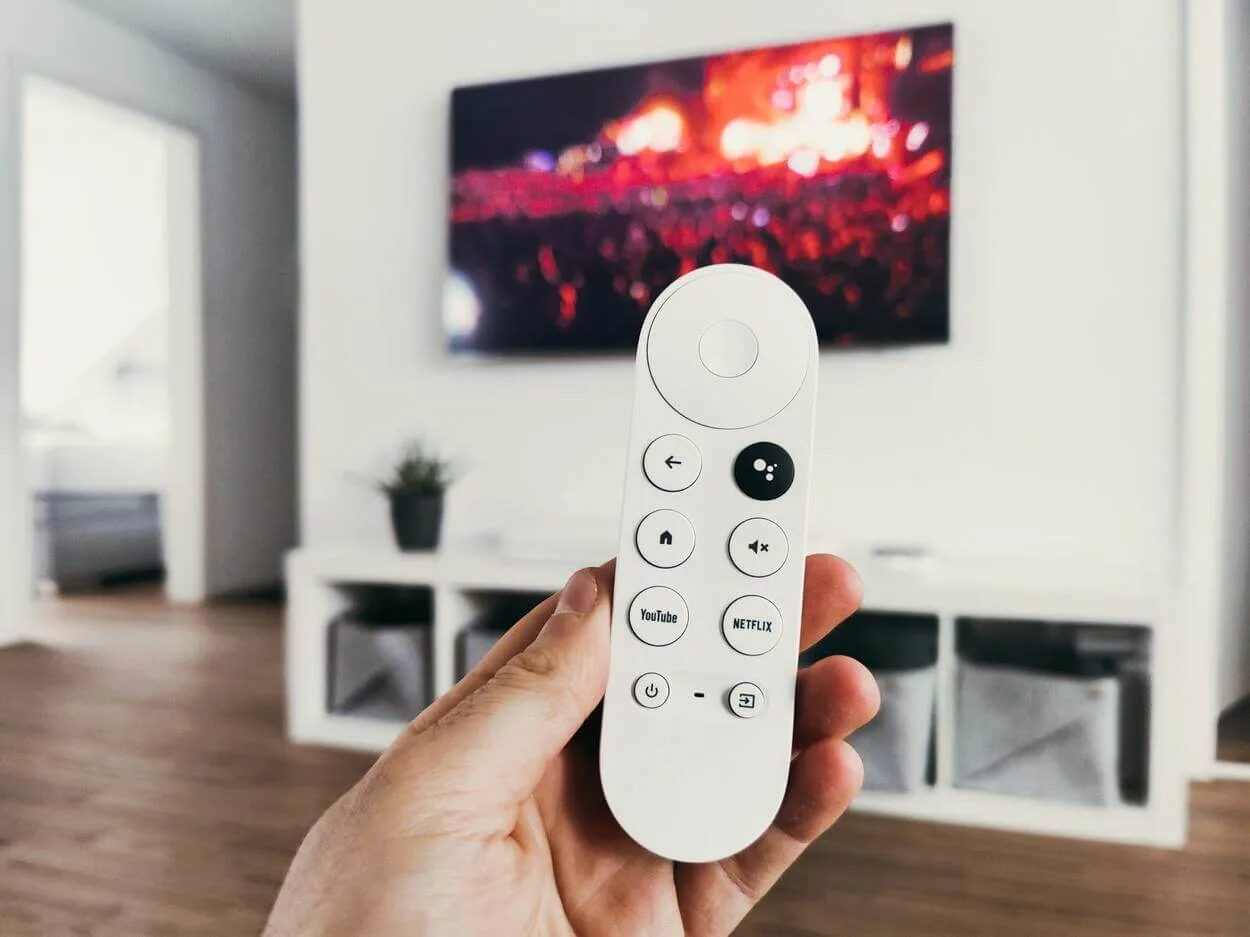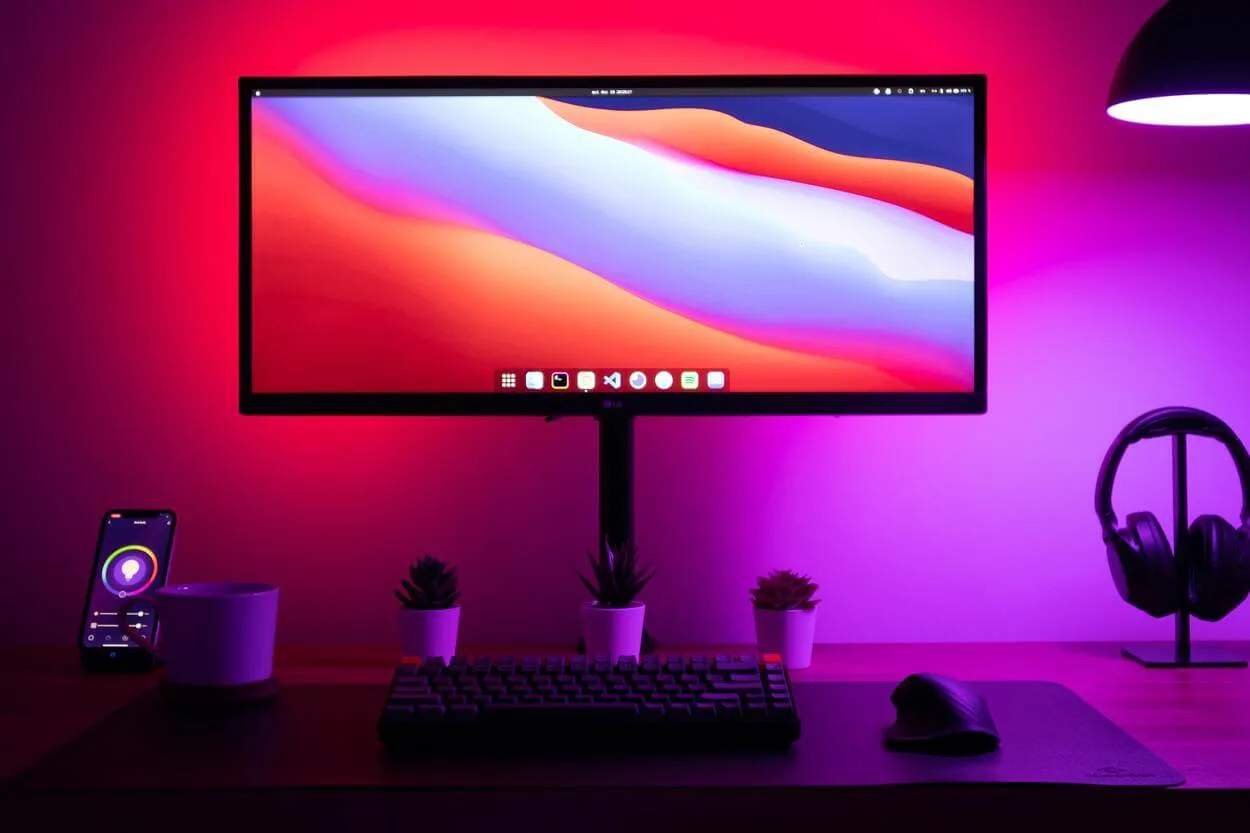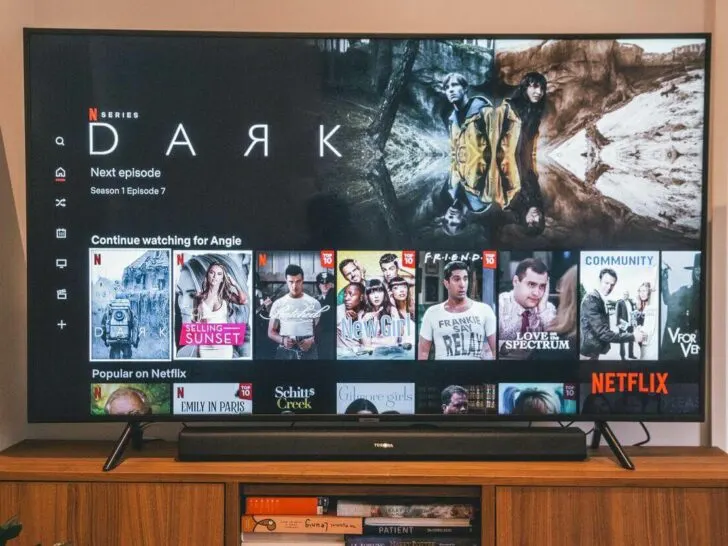Full HD and Ultra HD are used as marketing terms to distinguish one from another. The Full HD LED TV has a resolution of 1920 x 1080 pixels. Whereas Ultra HD LED TV refers to 3840 x 2160 pixels resolution, also known as the 4K resolution.
When shopping for a TV, you likely come across Full HD and Ultra HD. You should know exactly which is better. Knowing the difference affects the price, quality of the display, and the experience you’ll get out of it.
In this article, I’ll provide details on the terms Full HD and Ultra HD and their differences. This way, you’ll be able to tell what LED is best for your needs and budget.
Let’s get started.
What is a Full HD LED TV?
First off, a Full HD LED TV consists of 1920 x 1080 pixels. This means that an image within this display will be 1920 pixels wide and 1080 pixels in height.
Terms like Full HD are used to denote the resolution of a TV screen. HD stands for high definition and offers 1366 x 2160 pixels resolution. In digital imaging, the term resolutions stands for the pixel count.
On the other hand, an Ultra HD LED TV consists of 3840 pixels in width and 2160 pixels in height. It’s believed that the higher the resolution, the better the quality of the image.
Is Full HD enough for 43 inch TV?
Yes, Full HD will be enough for a screen of 43 inches.
On the other hand, if you use a 4K resolution on a 43-inch TV, you won’t be able to get its full benefit. It would look like an ordinary high-definition TV.
You’ll have to sit within a very close range of your TV to notice the difference in 4K resolution. Therefore, the difference may not be huge by shifting from 1080p to 4K on a TV size of 43 inches. This is why Full HD is considered enough.
Moreover, a set of 1080p is also cheaper than 4K. This way, you’ll have access to most of the same smart TV features at a low cost.
However, 4K is considered to be the future. While many services still offer 1080p, industry leaders have switched to 4K.
You can already find 4K content on streaming apps like YouTube, Netflix, and Disney Plus. Because of this, the price gap between 1080p and 4K will also narrow.
What’s the Difference Between a Full HD LED TV and an Ultra HD LED TV?
4K, UHD, or ultra-high-definition is a step further from HD TVs due to its 3840 x 2160 pixels.
It’s double the number of vertical pixels compared to Full HD and four times the number in total, which is 8,294,400 pixels. This is the main difference between ultra-high-definition TV and Full HD.
The higher pixel density in UHD offers a more transparent and more defined image of your favorite TV series, movies, and sports. It also shows an embodiment in greater detail and depth.
However, Full HD is the most common resolution among televisions and video content. Full HD is also considered 1080p. The difference between Full HD and Ultra HD is that you can easily find Full HD content.
This is because all movies and series on Blu-ray discs use this resolution. But then, the range of content in Ultra HD is also expanding.
Most people claim that you can tell the difference between the old and new specifications once you compare a 4K Ultra HD TV with a Full HD one. Ultra HD TV will offer you a more detailed image due to the increased resolution.
Scientific Perspective on Pixel Count and Viewing Angle in Full HD vs. Ultra HD LED TVs
Let’s look at the difference between the two from a scientific perspective. The horizontal human field of view is approximately 100 degrees. Each degree can accept about 60 pixels. In simple words, 6000 pixels can satisfy the maximum flat field of view.
So, in a Full HD LED TV, there are about 32 degrees when converted into the horizontal field of view. This is even less than half of the maximum flat field of view. Therefore, if you want to gain a larger angle of coverage, you’ll need to shorten the distance between the eyes and the image.
Comparatively, the image pixel count shown on Ultra HD LED TV is four times higher than the count on Full HD. For this reason, viewers will be able to gain a larger angle of coverage with the same unit space. The audience will have a more profound immersive experience with UHD.

Which is Better, Ultra HD or Full HD?
Looking at the differences between the two, Ultra HD is far better.
UHD delivers a higher quality and high-resolution image than Full HD. It offers a crisp picture quality and is worth spending the money on.
It has a higher pixel count. As you know, the higher the pixels, the better the image will be.
However, a setback could be that UHD costs more. As it has new features, it also has higher prices.
If you’re buying a TV within a limited budget, Full HD offers a beautiful viewing experience. Ultra HD just elevates the background slightly, especially on larger screens, but the difference isn’t much.
Here’s a video comparing 4K UHD TV vs. 1080p HD TV:
What is the Best TV Size for 4K?
50 inches is considered an ideal TV size for 4K resolution. When selecting a TV for yourself, there are certain things that you should always keep in mind:
- Screen size matters more than the resolution
There isn’t a massive difference between 4K and 1080p. However, you can note a distinction within the screen size. A giant TV provides a better viewing experience. - TVs are an investment, so get a good one.
TV is something that one keeps around for an extended period. Therefore, you should always invest in an excellent TV to run longer. You’ll have to buy from better brands offering you better quality. - Sound matters too!
Sometimes while the TV can offer you an excellent quality image, the sound can be terrible. Before you need to order a soundbar, it’s always better to check the sound of the TV you’re buying. - Set up for HDR on your TV
It would help if you had HDMI cables and game consoles that support HDR. You should also ensure enough internet bandwidth for 4K HDR content.
Resolution isn’t the most helpful measurement for representing sharpness. Instead, one should be looking out for pixel density of pixels per inch (PPI). The higher the PPI, the sharper an image is going to be.
For instance, a 55-inch TV with 4K resolution will be sharper than a 70-inch TV with 4K resolution. This is because it has the same amount of pixels in a smaller space, giving a better and more precise image.
Are Ultra HD TVs Worth it?
Yes, they’re worth it! If you’re planning to take advantage of the 4K resolution, you should opt for the Ultra HD television.
Despite limited content available in 4K resolution, the world is switching from Full HD, 1080p resolution to Ultra HD, 4K resolution. Within a few years, all content, whether games or videos, will be converted to 4K.
Moreover, a more excellent screen resolution with Ultra HD improves your viewing experience. It has sharper lines, smoother curves, and more apparent color contrasts, enhancing all types of content.
It also adds greater depth and detail to what you’re watching. If you’re watching a football match, a 4K resolution Ultra HD TV will bring you closer to the game.
| Full HD/1080p | Ultra HD/4K |
| 1920 x 1080 pixels | 3840 x 2160 pixels |
| Common for small televisions | Common for large televisions |
| More content available- like movies, series, etc. | It’s now expanding- For example, Netflix content in 4K |
| It uses progressive scanning, which is better for motion and fast-moving content. | Uses progressive scanning to provide accurate motion rendering. |
What’s the Difference Between UHD TV and QLED TV?
The difference isn’t of resolution. UHD and QLED can be considered different TV brands with some technical differences.
4K or 8K Ultra HD TV offers a lively picture. At the same time, QLED is an upgraded version of LED. It enhances the picture quality with brighter colors and is more vivid.
With QLED, you’re getting the best color accuracy at any resolution. Moreover, QLED TVs can feature a UHD display. For instance, you can find good quality QLED and UHD TVs in 65 inches or 75 inches.
Here’s a list of a few noticeable differences:
- QLED has better color accuracy than UHD
- QLED has a brightness of 1000 nits. Whereas UHD TVs don’t exceed a brightness level of 500 to 600 nits.
- UHD features a higher response time as compared to QLED. Therefore, it has high motion blur.

Should I Go for 4K and Smart TV or Full HD, 3D, and Smart TV?
While 4K might be the best, to experience it, you’ll also need 4K content. Unfortunately, that isn’t so accessible these days.
Full HD is considered a good option compared to 4K. This is because many service providers give HD services at moderate costs. To experience 3-D, you need to buy two things. Firstly, 3-D glasses, and secondly, 3-D content. Therefore, investing in a 3D smart TV might not be the best.
Smart TVs are considered as good. However, their costs make them less popular. If you want your TV experience to be in touch with the future, buy a smart TV.
Lastly, one should always buy those TVs which have qualities useful for their needs. Generally, a Full HD Smart TV is a good option.
Final Thoughts
- Resolution Difference: Full HD LED TV has 1920 x 1080 pixels, while Ultra HD (4K) has 3840 x 2160 pixels.
- Screen Size Consideration: Full HD is sufficient for a 43-inch TV. 4K may not provide significant benefits at this size.
- Content Availability: Full HD content is common. 4K content is expanding, and available on platforms like YouTube, Netflix, and Disney Plus.
- Pixel Density Comparison: 4K (UHD) offers double the vertical pixels of Full HD. It results in a clearer, more detailed image.
- Viewing Experience: UHD provides a more profound and immersive experience with higher pixel count and clarity.
- Cost Consideration: UHD TVs are more expensive due to new features and higher resolution.
- Ideal TV Size for 4K: 50 inches is considered ideal for 4K resolution, with screen size playing a crucial role in the viewing experience.
- Worthiness of Ultra HD TVs: Yes, Ultra HD TVs are worth it for the higher resolution, improved viewing experience, and future content trends.
Other Articles
Click here to learn more about these differences through this web story.

